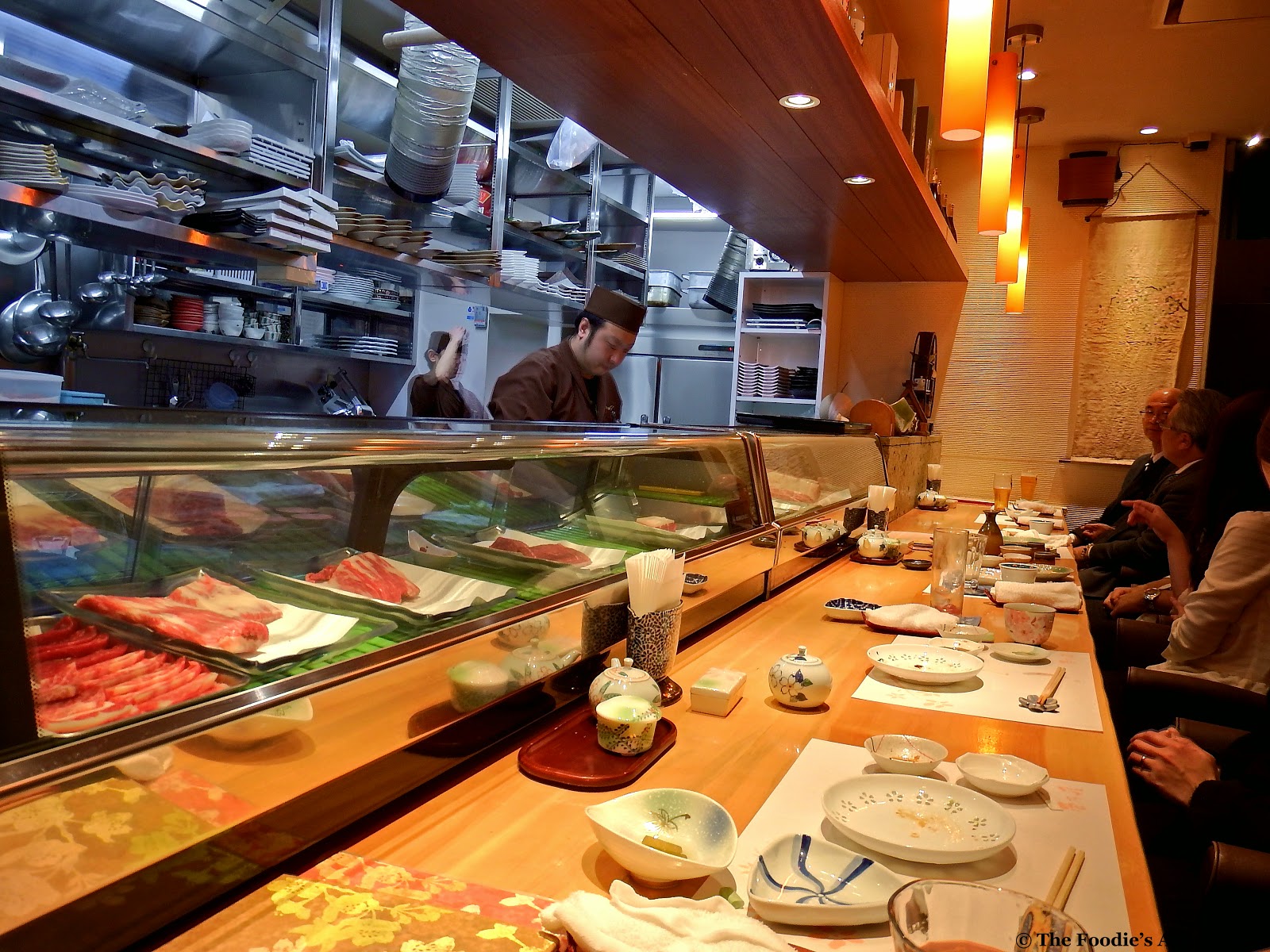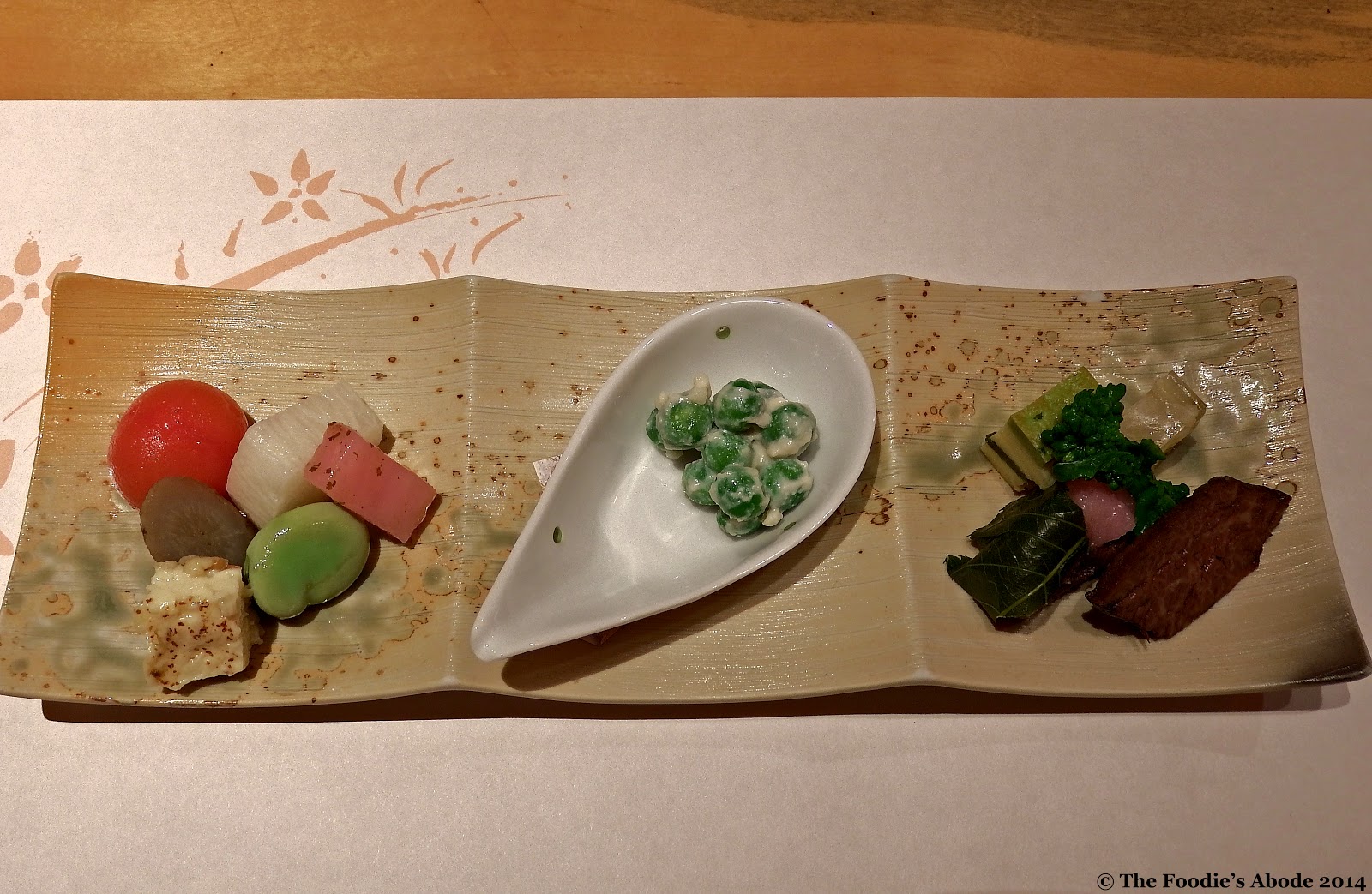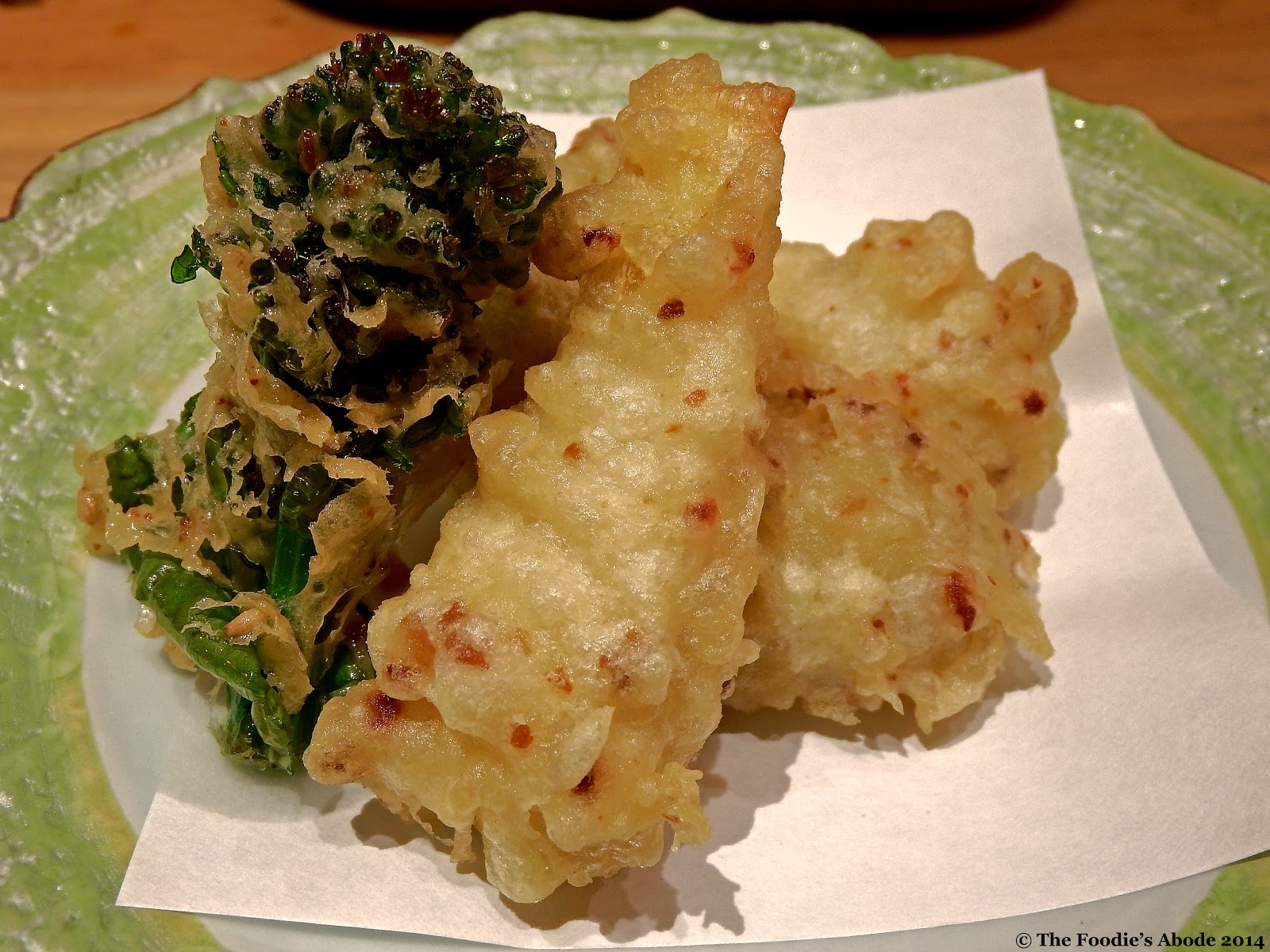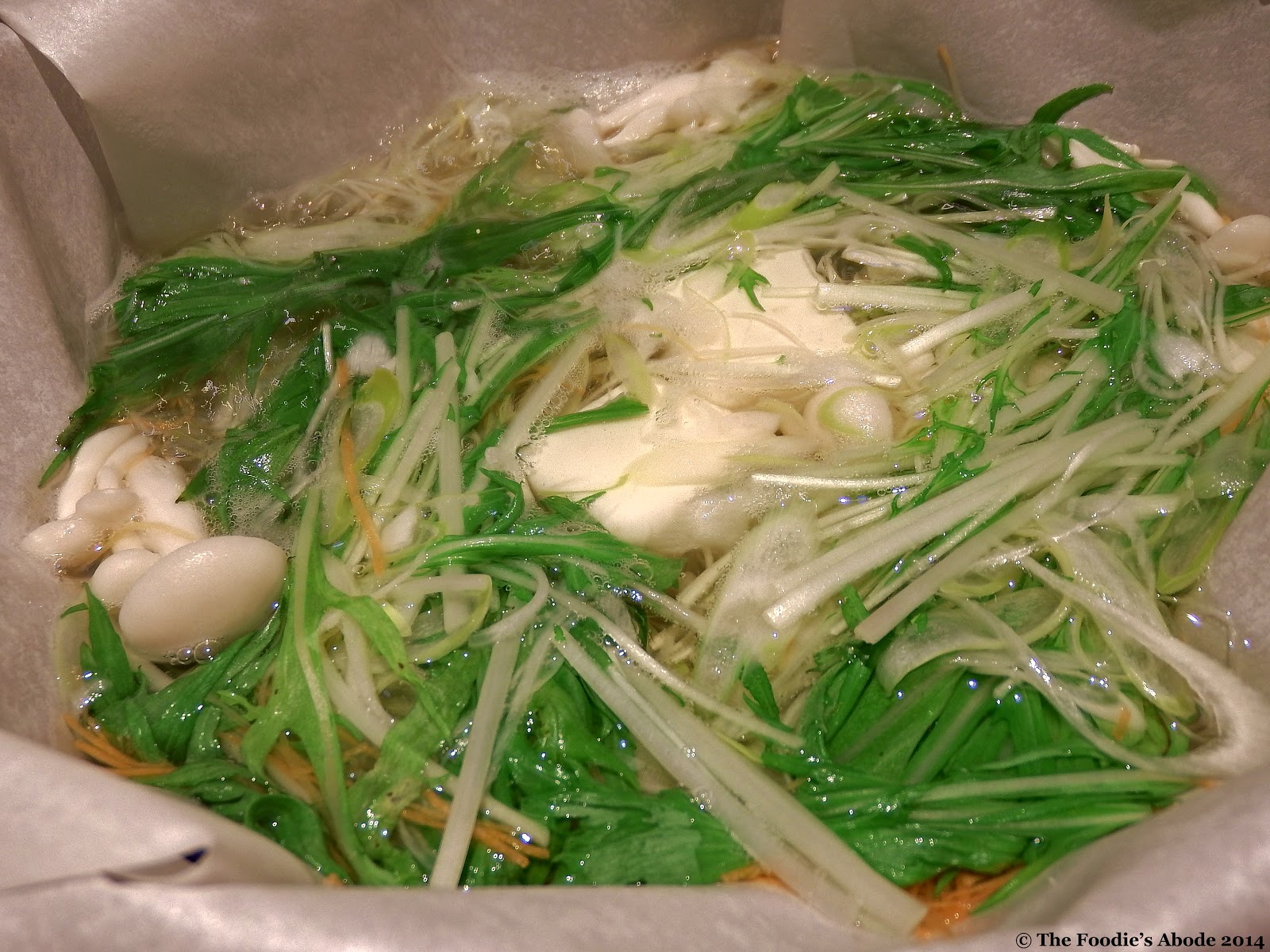We went to Kumamoto on a day trip today, about 1.5 hours south of Fukuoka on the Shinkansen. This city is home to one of the most important castles in the country and the beautiful Suizenji Garden, and is also the base from which many tourists explore nearby Mt. Aso, a famous active volcano with a bubbling crater.
In culinary terms, Kumamoto is most well-known as the origin of horsemeat cuisine or basashi (馬刺し). Controversial from a foreign perspective perhaps, but horses have been bred for consumption for more than 200 years in this region. Basashi restaurants are to be found all over Kumamoto. While the UK freaked out not too long ago over horsemeat being mixed into beef products sold in supermarkets, the Japanese have made an absolute gastronomic experience of this animal.
I was very keen to try it for myself, and we went to one of the best places in town for it, Suganoya Kamidori in the city centre, for dinner. Suganoya has other branches as far off as in Tokyo, but the Kamidori flagship, mysteriously located on the second floor of a car park building, is where the action is centred. The business itself was founded in 1789 during the Kansei period. Right now its parent company is based in the Mt. Aso region, on the grounds of Senkyo farm, which also boasts the only specialised horsemeat processing facilities in Japan with international certification, attesting to the quality and safety of its meat. Given the free-range environment in which the horses are raised, as well as the fertile soil and hence high-quality grass and water of the region, we figured that we couldn't go very wrong with choosing Suganoya for our unique horsemeat experience.
A young Chinese lady had assisted us in conveying our request to her manager when we dropped by earlier in the day to make the dinner reservation, and this same lady now received us very warmly and promptly showed us to our seats by the counter, where we had a good view of the action in the kitchen as well as of the space in general. The atmosphere was very lively and casual, and we felt at ease very quickly despite being the only foreigners there, as far as I could tell.
Actually, I was both surprised and relieved to see a Chinese person working here - no language barrier then when it came to questions about the food! - but couldn't resist asking her how she came to be working in Japan. Apparently, she had been a student in this country before deciding to stay on. She would serve us with utmost politeness and patience throughout the evening, and we both felt very well taken care of, despite the full house and busy service staff (herself included, obviously) scurrying around tables to try to attend to all customers' needs as efficiently as they could.
I was rather fascinated by the different cuts of horse available for sushi and sashimi. Here at Suganoya, they pride themselves on showcasing the varying flavours of all possible cuts of the animal, as it grows more slowly than other cattle, hence making it a relatively rare delicacy not to be wasted. In many ways, Kumamoto horsemeat seems to enjoy the same elevated treatment as Kobe beef and bluefin tuna. Due to its pinkish appearance they even have a special name for it - sakura-niku 桜肉 (lit. 'cherry blossom meat') - especially during the spring flowering season.
 |
| Different cuts of horse displayed in the chiller. |
Amongst the many dinner kaiseki options available, we picked the sakurafubuki 桜吹雪会席, very poetically named to symbolise moving on from winter through the blossoming cherry flowers eliminating snow from their branches. At 8,400 yen including service and tax, this kaiseki also happens to be the restaurant's second best offering, which we thought would encompass a wide enough range of horsemeat cooking, without burning an unnecessarily huge hole in our pockets. We would not be disappointed.
Amuse-bouche (先付け sakizuke): fuki (蕗) in a light dashi-based broth with bonito flakes.
Fuki or Japanese butterbur is a popular mountain vegetable delicacy in spring. The stalks of fuki have a bitterness and crunchiness akin to celery stalks, which are normally reduced and softened respectively through boiling. Here, these finely cut stalks were surprisingly tender and juicy, and the dashi and bonito imparted a deep and sweet flavour that countered the fuki's natural bitterness very effectively. A lovely way to refresh and stimulate the palate.
Appetisers (前菜 zensai): first, an assorted platter of bites.
Starting from the left, we had a variety of palate-cleansing pickles, including tomato, 大根 daikon (radish), 牛蒡 gobou (burdock root) and 蚕豆 soramame (fava bean). All were very fresh, juicy and crisp. The special cube in the foreground was made with mashed tofu with soy sauce, and this was particularly tasty, with a surprisingly rich texture.
In the middle was a small spoonful of spring peas simply tossed in creamed tofu dressing, lightly seasoned with soy sauce and without vinegar or oil, a very typical Japanese way of making salad known as 白和え shiraae. The contrast in textures between the crunchy peas and the smooth and creamy dressing was delightful. Also, while I'm not usually a fan of peas, due to the association with mushy or defrosted peas that go with junk food like fish and chips, the taste of truly fresh and seasonal peas is quite another matter altogether.
Finally on this platter we had a slice of roast horse, sakura-infused rice cake with red bean paste filling and wrapped in sakura leaf, 菜の花 nanohana (a spring vegetable closely related to broccoli), bamboo shoot skin and 葛 kuzu (Japanese arrowroot) starch cake. This was the most luxurious part of the dish - a lovely combination of sweet and savoury spring flavours. My favourites were definitely the ones in front; the sakura-based morsel had such remarkably sweet aromas, while my first taste of horsemeat yielded a most pleasant impression of a tender, succulent and full-bodied meat not unlike high-quality Japanese beef.
Next up was on the elaborate succession of appetisers was horse tartare marinated in sesame oil, presented in a very pretty and seasonally apt receptacle. The oil enhanced the already rich flavour and texture of the horsemeat with an intense nuttiness and silky smoothness, while the scallion garnish contributed further crispness and aromas in each bite.
Sashimi: 馬刺し basashi featuring 5 different cuts of the horse, served with grated ginger instead of wasabi, and shredded shallots, scallions and onions.
From left to right, we had belly (futaego フタエゴ - surprisingly firm texture like premium ham), best cut (tokusen 特選トロ - beautiful marbling and balance of fat and lean meat, melt-in-the-mouth, just like ootoro of bluefin tuna), neck (koune コウネ - pure fat, exceptionally smooth and rich in collagen, like lardo, and the scarcest part of the animal), premium cut (jo 上 - less marbled than the best cut but still very tasty), loin (rosu ロース - lean, tender and succulent). The rather unusual and relatively pungent accompaniments worked effectively with this strong-tasting red meat. The portion was great too, allowing us to fully appreciate the characteristics of each cut. Note that the dish in the above picture was for an individual, not for sharing, unlike in Yamanaka the previous evening where we got only one slice of each type of fish.
Grilled dish (焼物 yakimono): skewer of horse short rib (karubi カルビ, transliteration from the Korean for 'rib'), with again unusual accompaniments of deep-fried chopped garlic, wasabi and lime.
This was well-seasoned and extremely tasty, with a lovely caramelised edge from the grilling, and the large chunks of meat were incredibly tender and juicy. Amongst the accompaniments I loved the crispy garlic the most for its aroma and texture, which I thought matched the meat most perfectly. The lime was a little too acidic and bitter for the meat, while the wasabi did not have any particularly memorable effect though it was pleasantly piquant.
Deep-fried dish (揚物 agemono): tempura of spring vegetables, including nanohana and some root vegetables - taro root (里芋 satoimo), lotus root (蓮根 renkon), and burdock root (牛蒡 gobou).
Coming after some excellent horse dishes, this seemed a tad underwhelming, though there was no doubt as to the freshness of the produce. The tempura batter for the root vegetables was thicker and clunkier than I would have liked it to be, but fortunately their rich texture and delicate taste still came through. On the whole, pleasant, though not particularly exciting.
Palate cleanser (口直し kuchi-naoshi): fresh tomatoes on ice.
This was probably the most disappointing item of the evening. I get that palate cleansers are supposed to be simple and refreshing, but half an ordinary tomato - really? The tomato was good, but still not as sweet and juicy as cherry tomatoes, I would think. Considering the usual level of refinement of Japanese cuisine especially in a restaurant at this price point, I would have expected more effort on the kitchen's part even for a modest palate cleanser (unless the tomatoes were absolutely earth-shattering gems, which they were not).
Hotpot (鍋物 nabemono): shabu-shabu using the best cut (tokusen) once again, thinly sliced, with fresh seasonal vegetables and a light clear broth.
 |
| The marbling is Nature's work of art. |
We cooked all the vegetables, mushrooms and tofu in the broth first to give the latter additional flavour.
Then we portioned everything out into our own bowls, leaving the broth clear once again to cook the meat separately. Simply swipe each slice (one at a time) quickly into the boiling soup two or three times...
And it's done. The residual heat will continue to cook the thin slices without causing them to be dry or tough. As lovely as the sashimi version, with added flavour from the vegetable broth. Truly the pièce de résistance of this dinner. It was also our first authentic experience of shabu-shabu, and I finally understood why this hotpot dish with high-quality meat (usually beef) is so expensive everywhere. It has to be tried to be believed.
Drink up the soup after the meat's finished - that's where the fat and flavour will be concentrated by now! This was so rich and tasty!!
Sushi: Instead of plain rice/udon with soup, we chose an upgrade for merely 525 yen to 2 more pieces of horse nigiri - using the premium (上 jo) cut. A pretty good deal I think, and isn't that the whole point of eating here!
Dessert: Dekopon (デコポン) orange sorbet with fresh strawberry.
The Dekopon cultivar of oranges is native to Kumamoto; in its original form it is seedless and very sweet. The sorbet here fully reflected its natural qualities, with a pleasant tangy edge to boot. The strawberry was quite juicy and well balanced in taste. This was a light and refreshing way to end the sumptuous dinner.
In a nutshell: the underwhelming tempura and palate cleanser notwithstanding, an excellent introduction to horsemeat cuisine. I thought that horsemeat is really quite similar to top-grade Japanese beef, but with a milder and sweeter taste, and a somewhat leaner and firmer texture.
Our lovely and earnest server sent us off very warmly after the meal, and I thanked her sincerely for having helped to clarify unfamiliar ingredients, and for taking the trouble to ask and translate from her manager and colleagues in the kitchen, if she didn't have an answer immediately. Dealing with this foodie's questions with utmost patience and a smile, in the midst of an extremely busy dinner service, must have been no mean feat! Only regret - forgetting to ask for her name, but then again it's probably not difficult to figure out who she is if you go there, given her unique identity.
Suganoya's apparent popularity is certainly well-deserved, and I would highly recommend it to anyone seeking a distinctive gastronomic experience whilst in Kumamoto.
Address in kanji: 熊本県熊本市中央区城東町2-12ライオンパーキングビル2F
Tel.: (81) 96-355-3558
Open daily for lunch (11.30-14.30) and dinner (16.30-22.30) except national holidays.






















No comments:
Post a Comment